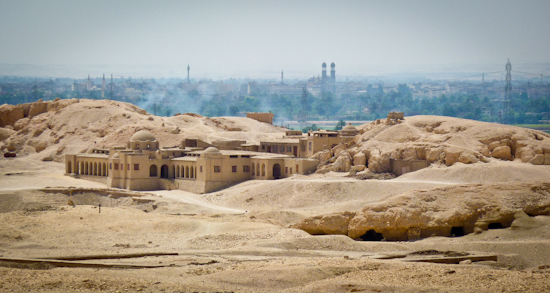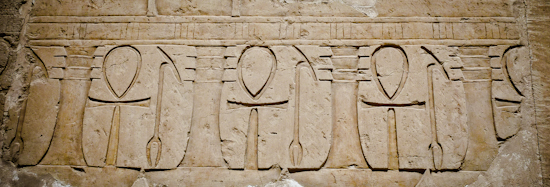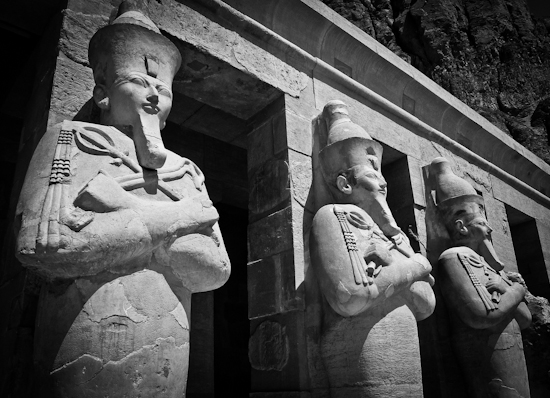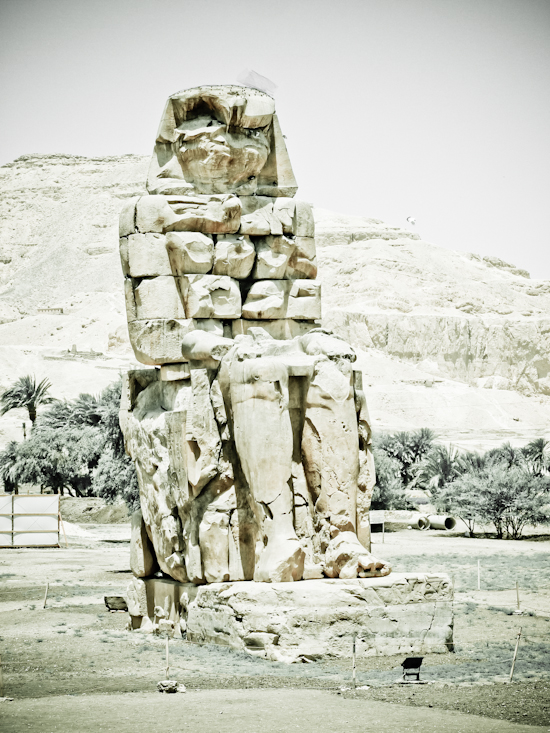- 24 . 04 . 11
When your gender-bending step-mother steals your throne, there’s only one thing you can do.
- StumbleUpon
- TwitterTweet
- Facebook
-
Flickr
Family Feud
Is Tuthmosis III the most petulant pharaoh to have ever reigned in Egypt? Probably not, given 30 dynasties and hundreds of rulers stretching 3200 years, but he was pretty petulant nonetheless. The son of Tuthmosis II and a common woman – an ancient Kate Middleton if you will – Tuthmosis III was due to come into the throne when his father died leaving no sons from his officially royal wife Hatshepsut.
Hatshepsut had other ideas. With Tuthmosis III still in his infancy, she claimed the throne and ruled in his stead. Initially opposed for being a woman by pretty much everyone, she suppressed the objections of her priests and subjects by spreading a handy (and vaguely familiar) immaculate conception story in which her mother fell pregnant after receiving the key of life in her mouth from the god Amun-Ra. (The Ancient Egyptians were also apparently oblivious to allusion and innuendo.) Elizabeth I of England had to just make do with the heart and stomach of a man, but Hatshepsut took it further and even started wearing a false beard to seal the deal. Transgender Egyptians had a role-model at last!
Tuthmosis wasn’t too happy with this, so it was agreed that she would rule only until he was old enough to assume power. In the interim, she convinced him that as future commander in chief, he needed to know about the ways of war and packed him off to military college in the middle of nowhere, on the understanding that it would only be for a short time.
She ruled for 20 years.
During this time she won over the Egyptian people, added to Karnak and built an impressive temple for herself on the opposite side of the mountain to the Valley of the Kings. In what, beard aside, could be considered playing to stereotypical gender roles, she presided over the Time of Peace, fought no wars, organised trade missions to what is now Somalia, planted lots of trees and dedicated her temple to the goddess of love, beauty and womanhood.
Tuthmosis III knew how to hold a grudge and while Hatshepsut nurtured trees, he nurtured revenge. In fact, it was long thought that he had poisoned her, until a tooth was found just three years ago that positively identified her mummy and confirmed death by natural causes. Egyptology is far from a dead subject, even if its subjects are.
When at last she passed away, Tuthmosis set about removing her from the history books. He lopped the head off every single statue that he could find of his aunt/mother-in-law/sister-in-law (the Ancient Egyptians make the Amish gene pool look like Loch Lomond by comparison). He built walls around those statues of her that were dedicated to gods and could not be destroyed. He scratched her face out of every frieze and relief that existed. In those where she was depicted as a man (which, given her penchant for cross-dressing was quite a few), he scratched off her name and replaced it with his own. Kind of like Oedipus in reverse. It’s pretty amusing to see her temple on the West Bank of Luxor and realise that the majority of damage that was done was done three millennia ago by a spiteful nephew/son-in-law/brother-in-law.
Tuthmosis spent the rest of his days taking out his mommy issues on the surrounding nations and making up for his nemesis’s scandalous lack of warfare. He conquered cities as far away as modern-day Syria, Sudan and Israel, bragging about it by listing his conquests at Karnak. The military training had been useful after all. He also managed to find time to construct Cleopatra’s Needles, one of which is now in London.
Meanwhile, not only did Hatshepsut manage to get herself buried in the Valley of the Kings, she now lays claim to the longest set of tunnels there, with the hallways and antechambers running to 210m, most of the way through the mountain. She just failed to live long enough to see the burial chamber connected to her temple on the other side of the mountain, which would have been a huge achievement.
You can see why she didn’t want to be buried in the Valley of the Queens. If the Valley of the Kings was Mayfair, built in the shadow of a pyramid-shaped mountain, the Valley of the Queens was more like Fleet Street. Leicester Square at best. Definitely not green. Altogether more humble.
Not just for queens, children and princes are also buried here, close to their mothers. In fact, of the three tombs currently open to tourists, the two most impressive are for princes, while the third, the tomb of Queen Titi, was used as a stable for horses about 100 years ago, leaving it quite badly damaged. The women have the trump card though in the form of Nefertari’s tomb, which is apparently far too spectacular and precious to open to the general public, and is limited to visiting dignitaries and those who can afford the $5000 entrance fee.
When noblemen are included, there are many hundreds of tombs dotted throughout the hills here. Given the perfect conditions and continuing discoveries, it is likely that there are many hundreds more yet to be revealed, each with their own unique story.






Leave a Reply